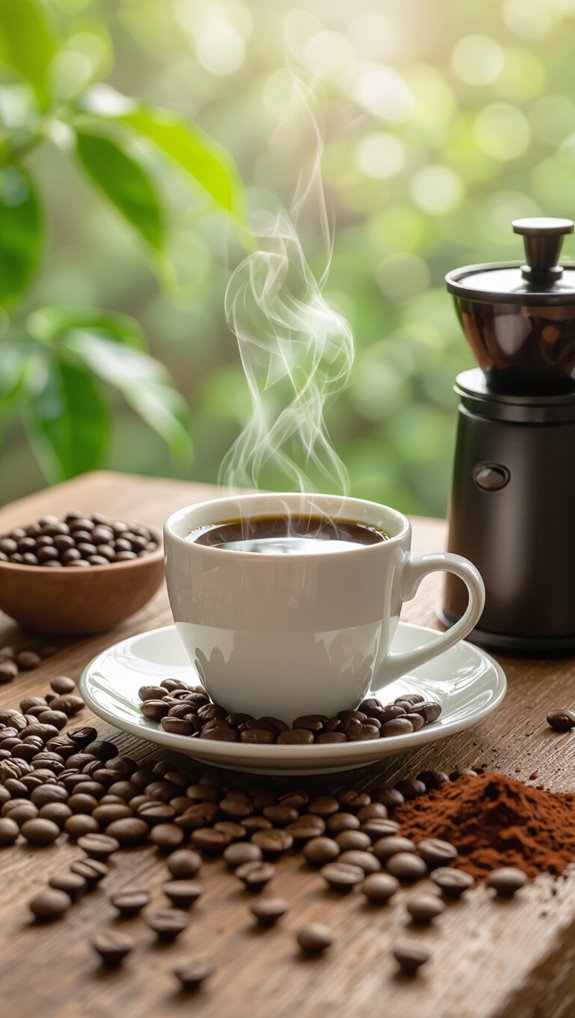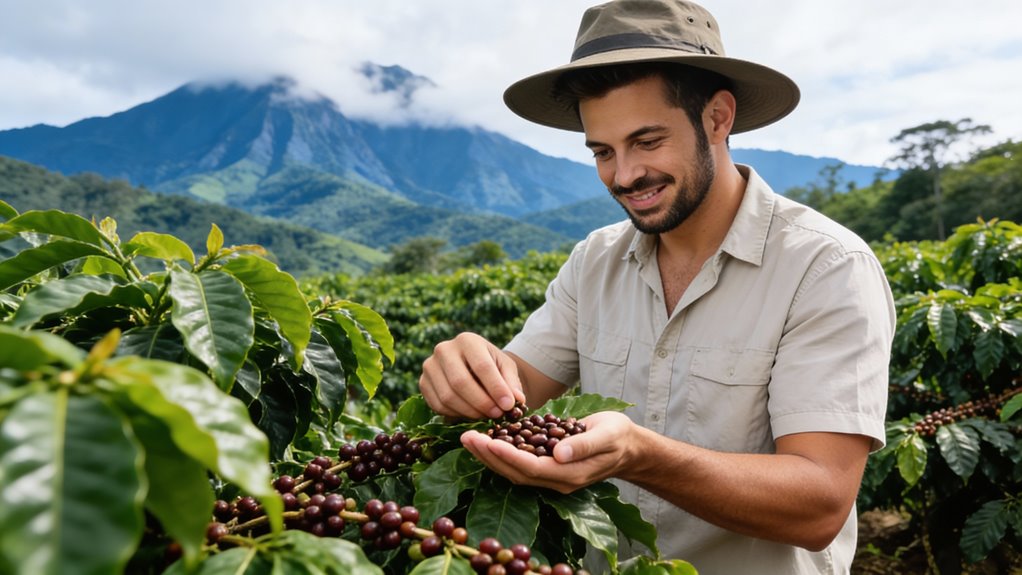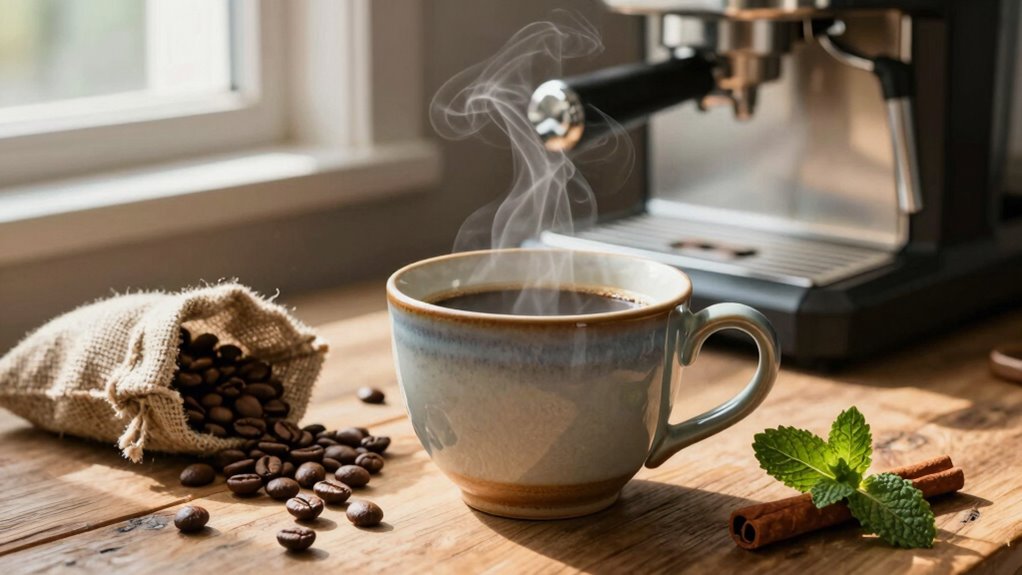Ever wondered why your favorite specialty coffee shop keeps highlighting Caturra on their menu? Or maybe you’ve noticed this variety name on your coffee bag and wanted to know what makes it different from other beans. Caturra coffee has become a staple in the specialty coffee world, but many coffee lovers still don’t know the story behind these compact, flavor-packed beans.
Caturra is more than just another coffee variety—it’s a natural mutation of Bourbon that transformed coffee farming with its smaller trees and impressive yields. In this guide, we’ll dive into Caturra’s Brazilian origins, explore its distinctive taste profile that ranges from bright citrus to deep chocolate notes, and reveal the brewing methods that bring out its best qualities. Whether you’re a home brewer or simply curious about what you’re drinking, you’ll discover why roasters and farmers alike have embraced this remarkable coffee variety.
Table of Contents
What is Caturra Coffee and Why You’ll Love It
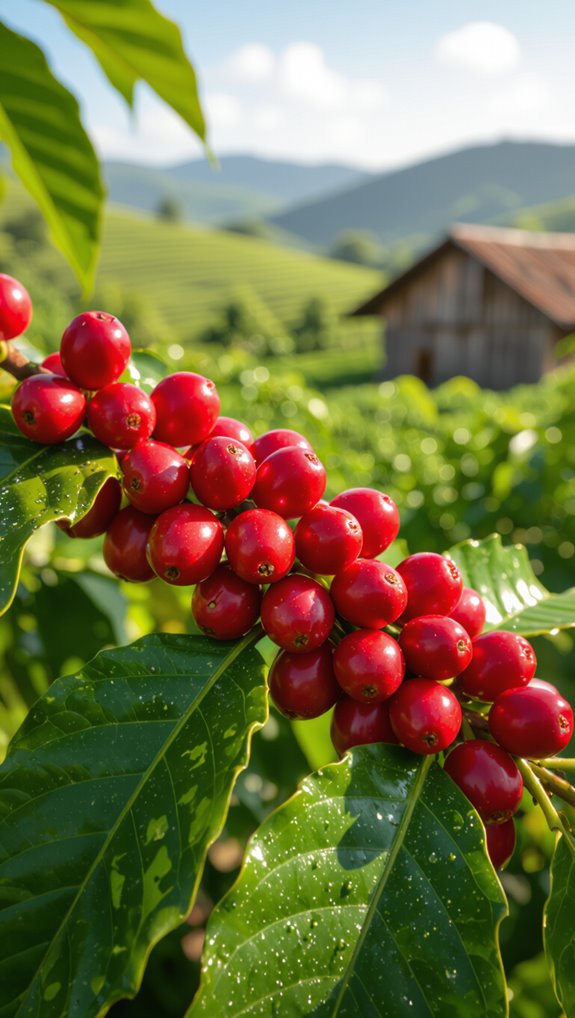
If you’re looking to elevate your coffee experience, Caturra coffee is about to become your new favorite brew. This exceptional coffee variety offers a vibrant flavor profile that’ll tantalize your taste buds with its balanced sweetness and bright citrusy notes. Discovered in Minas Gerais, Brazil offers a unique origin story for this remarkable coffee variety that traces its roots through a natural mutation of Arabica Bourbon.
Originating from Brazil, Caturra comes in two exciting variations – red and yellow – each delivering unique taste experiences. Whether you’re a pour-over enthusiast or an espresso lover, Caturra adapts beautifully to different brewing methods.
Its chocolate, almond, and honey undertones make it a versatile choice for coffee lovers seeking something extraordinary beyond ordinary blends.
Where Does Caturra Coffee Originally Come From
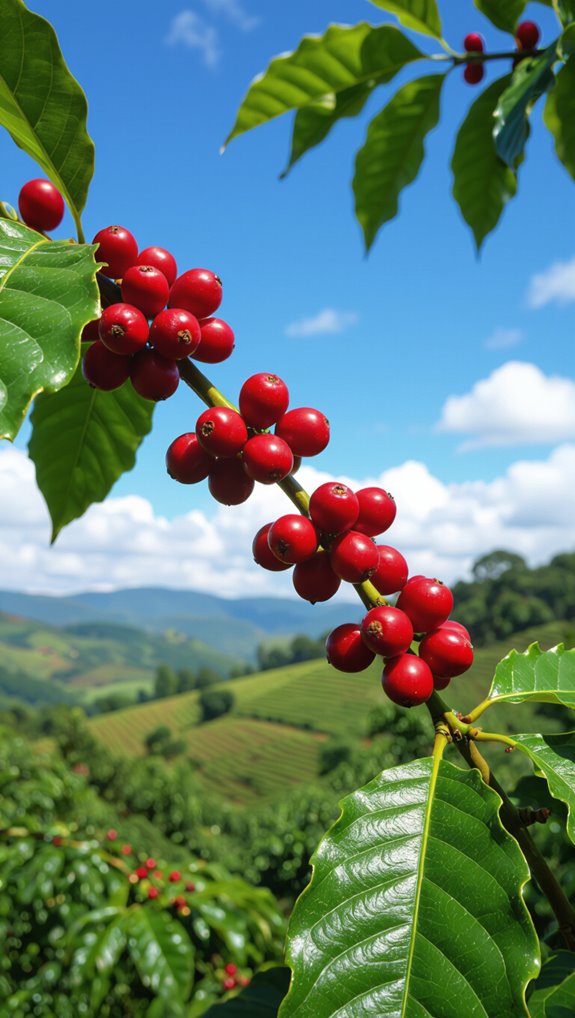
Caturra coffee originated in the lush, rolling landscapes of Brazil, specifically in the state of Minas Gerais, where a remarkable natural mutation of the Bourbon coffee variety was discovered between 1915 and 1918. The Agronomic Institute of Campinas (IAC) recognized its potential and carefully selected this unique variety for its compact growth and high-yield characteristics.
| Origin | Location | Year |
|---|---|---|
| Brazil | Minas Gerais | 1915-1918 |
| Variety | Bourbon Mutation | Natural |
| Impact | Compact Growth | High Yield |
From its Brazilian roots, Caturra quickly spread across Central and South America, becoming a cornerstone of specialty coffee production in countries like Guatemala, Colombia, and Costa Rica. Its genetic lineage within the Bourbon-Typica group and adaptable nature made it a game-changer for coffee farmers worldwide. The variety’s natural mutation allowed farmers to cultivate coffee more efficiently, with smaller trees that were easier to manage and harvest.
What Does Caturra Coffee Actually Taste Like

How does a single coffee variety manage to dance across your taste buds with such complexity and charm? Caturra coffee is a flavor symphony, delivering a balanced profile of sweet chocolate, vibrant citrus, and delicate fruit notes.
Depending on the roast, you’ll experience different flavor dimensions: light roasts highlight bright, lemony acidity, while darker roasts emphasize rich chocolate undertones. Red Caturra offers sweeter notes with grapefruit and berry hints, while Yellow Caturra brings honey-like sweetness and tropical fruit complexity.
Its versatility shines across brewing methods, making it a favorite among coffee enthusiasts seeking nuanced, consistently delightful cups. The dwarf plant genetics of Caturra contribute to its unique flavor development, allowing for increased fruit production and concentrated taste profiles.
How Caturra Differs from Bourbon and Other Varieties
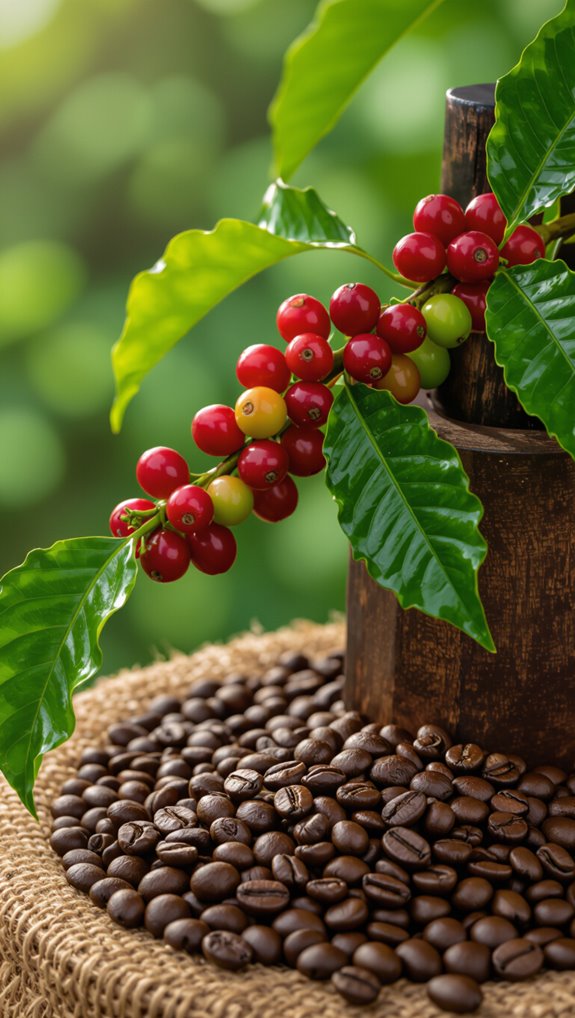
The world of coffee varieties is a fascinating genetic tapestry, where subtle mutations can create dramatically different flavor profiles and agricultural characteristics. Caturra and Bourbon represent this diversity brilliantly, sharing a genetic lineage but diverging in key aspects.
Here’s how they differ:
- Structure: Caturra’s compact, dwarf structure allows denser planting, while Bourbon remains taller and more spread out.
- Flavor: Bourbon offers traditional, balanced chocolate and nut notes; Caturra presents a brighter, crisper profile with berry undertones.
- Productivity: Caturra typically yields more cherries per plant, making it more attractive to farmers seeking higher output.
These nuanced differences showcase coffee’s incredible genetic complexity.
Best Countries and Regions Growing Caturra Coffee
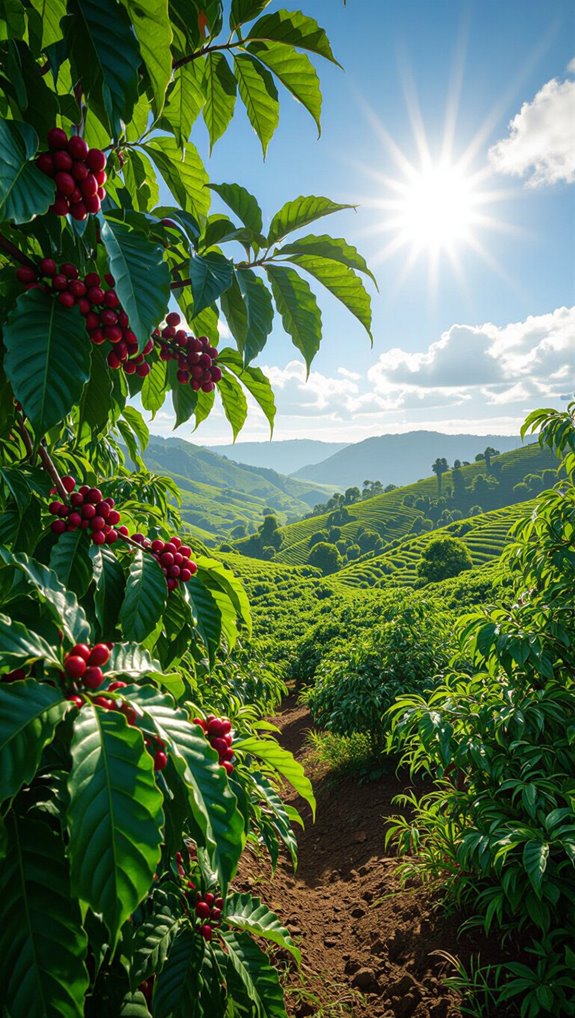
In the vibrant landscape of coffee cultivation, Latin American countries reign supreme as the heartland of Caturra production, with Colombia, Brazil, and Central American nations emerging as the most prolific growers of this distinctive coffee variety.
Colombia leads the charge, with regions like Antioquia and Huila producing nearly 70% of its coffee cultivation area in Caturra. Brazil follows closely, leveraging its massive coffee infrastructure in states like Minas Gerais and São Paulo.
Central American countries, particularly Costa Rica and Guatemala, have embraced Caturra for its exceptional quality, with high-altitude farms producing nuanced, flavor-rich beans that coffee enthusiasts worldwide treasure.
How to Brew the Perfect Cup of Caturra
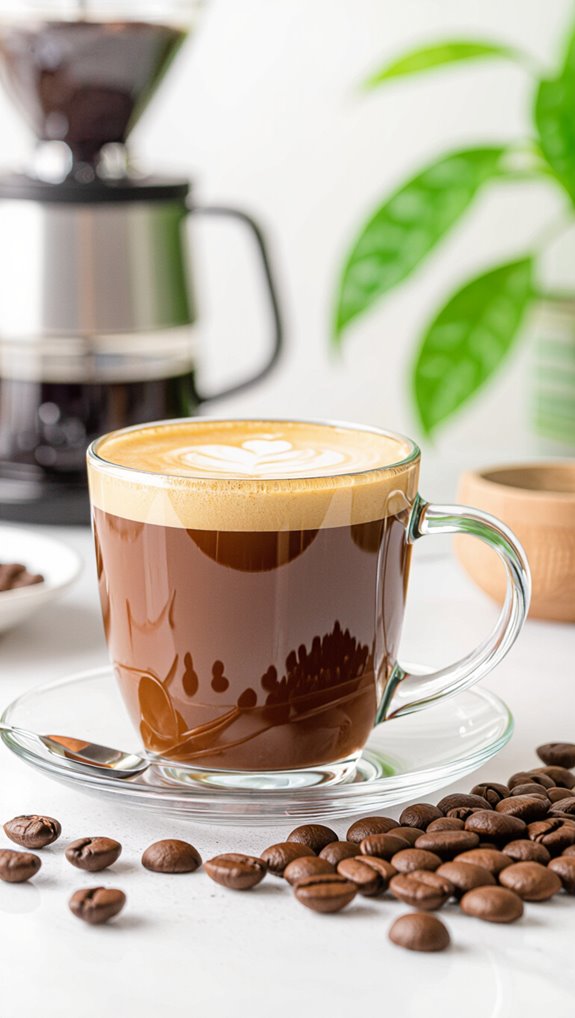
Brewing the perfect cup of Caturra coffee starts with selecting high-quality, freshly roasted beans and the right equipment to unlock its unique flavor profile. I’ll walk you through the essential ingredients you’ll need, from a reliable burr grinder to precise measuring tools, and share the key techniques that transform good coffee into an exceptional experience.
Whether you’re using a pour-over, French press, or espresso method, mastering Caturra’s brewing nuances will help you extract its vibrant, complex notes of fruit, chocolate, and subtle sweetness.
Ingredients
When selecting ingredients for the perfect Caturra coffee, you’ll want to focus on bean quality, precise measurements, and thoughtful preparation that transforms ordinary brewing into an extraordinary sensory experience.
The key ingredients are:
- Freshly Roasted Beans: Choose Red or Yellow Caturra varieties within 4-6 days of roasting, selecting based on desired flavor profile (sweet chocolate or honey-like citrus notes).
- Filtered Water: Use water with 125ppm total dissolved solids, heated to 90-96°C depending on brewing method.
- Precise Measurements: Match coffee-to-water ratios carefully (1:14 for pour-over, 1:12-1:15 for French press) to extract optimal flavor complexity.
Equipment
Let’s dive into the world of Caturra coffee equipment, where the right tools can transform your brewing from ordinary to extraordinary. A quality burr grinder is your first essential, ensuring consistent particle size for even extraction. Different brewing methods demand specific grinds—coarse for French press, medium for Aeropress, and fine for espresso.
Precision scales, timers, and filtered water are game-changers, helping you nail the perfect 1:16.67 coffee-to-water ratio. Whether you’re using a V60, Chemex, or espresso machine, matching your equipment to your brewing style guarantees a sublime Caturra experience.
Instructions
After selecting your precision grinder and carefully chosen equipment, mastering the art of brewing Caturra coffee requires comprehension of its unique character and nuanced preparation techniques.
Your brewing success depends on grasping key variables:
- Temperature Control: Target 90°C water for optimal extraction, preserving delicate chocolate and fruit notes.
- Grind Precision: Adjust grind size based on brewing method – fine for espresso, coarse for French press.
- Ratio Management: Maintain a 1:14 coffee-to-water ratio to balance acidity and flavor complexity.
Each brewing method unveils different dimensions of Caturra’s rich, dynamic profile, transforming simple beans into an extraordinary sensory experience.
What Makes Caturra Beans Good for Home Roasting
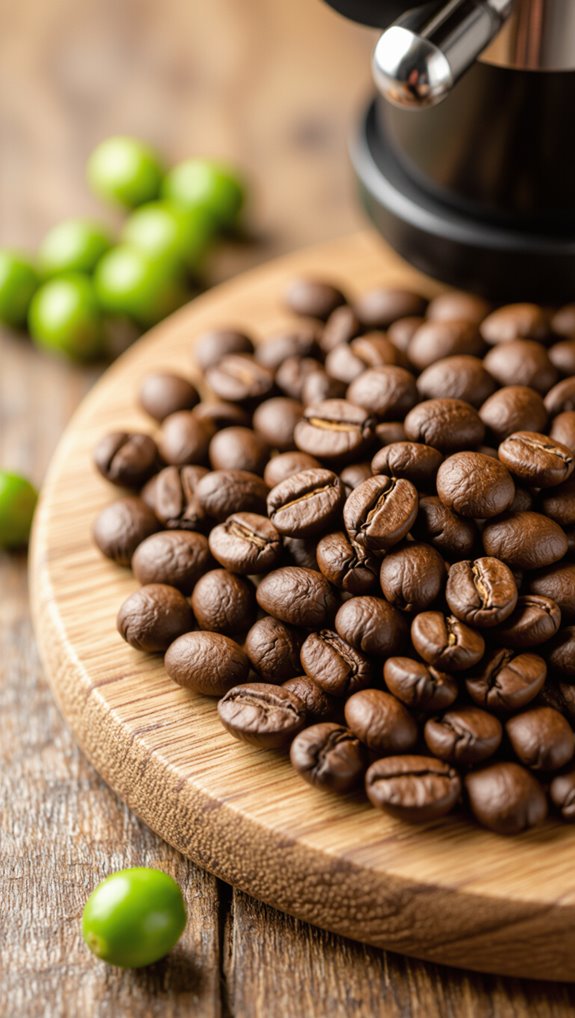
Dive into the world of home coffee roasting, and you’ll quickly discover why Caturra beans are a home roaster’s dream.
Their uniform size ensures even roasting, reducing the risk of burnt or underdeveloped beans. With a balanced flavor profile, these beans offer incredible versatility—from bright, citrusy pour-overs to rich, sweet espressos.
Home roasters love Caturra for its adaptability. You can experiment with different roast levels, unlocking unique taste notes while maintaining consistent quality.
Plus, buying green beans is more cost-effective and environmentally friendly, making Caturra a smart choice for coffee enthusiasts seeking control and sustainability in their brewing journey.
Where to Buy Quality Caturra Coffee Beans
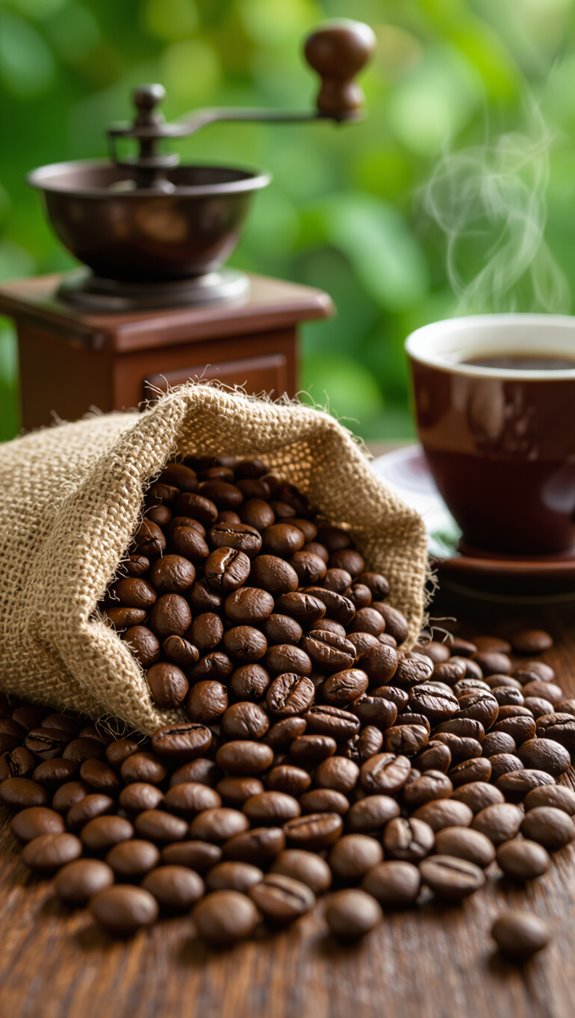
If you’re hunting for top-notch Caturra coffee beans, specialty roasters and online platforms are your golden ticket to exceptional flavor.
When sourcing quality beans, consider these key strategies:
- Seek Trusted Specialty Roasters: Look for shops offering traceable Caturra beans scoring 85+ on the SCAA scale, with clear roast dates and origin transparency.
- Explore Online Marketplaces: E-commerce sites dedicated to coffee provide detailed processing information, flavor profiles, and direct farm-to-consumer options.
- Focus on Renowned Regions: Prioritize beans from Colombia, Costa Rica, and Guatemala, known for producing high-quality Caturra with complex flavor profiles.
Why Caturra Is So Popular in Specialty Coffee

Caturra has become a darling of the specialty coffee world primarily because of its exceptional flavor profile and remarkable agricultural versatility.
Its clean, balanced cup with bright citrusy and chocolatey notes captivates coffee enthusiasts, while its compact plant structure appeals to farmers facing climate challenges.
Roasters love Caturra for its consistent bean quality and adaptable roasting potential.
From light pour-over styles that highlight its natural acidity to rich espresso profiles that emphasize sweetness, this variety offers incredible flexibility.
Its ability to produce high-quality beans across diverse growing conditions makes it a true specialty coffee champion.
Caturra Coffee Hybrids You Should Know About
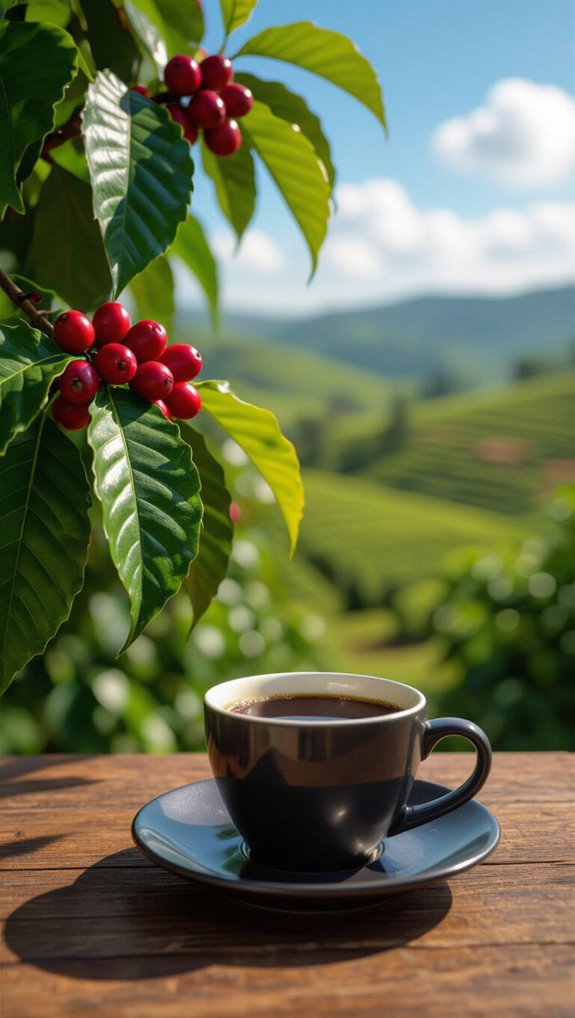
Explore the world of Caturra coffee through its fascinating hybrid varieties, each telling a unique story of agricultural innovation and flavor evolution. These dynamic cultivars transform traditional coffee breeding by combining desirable traits:
- Catimor: Rust-resistant hybrid with higher caffeine, blending Caturra and Timor Hybrid genetics
- Catuai: Compact variety perfect for dense planting, offering wind resistance and adaptability
- Maracaturra: Specialty coffee gem featuring large beans and complex flavor profiles
Hybrids represent strategic solutions for coffee producers, balancing disease resistance, productivity, and maintaining the beloved sweet, citrusy characteristics of original Caturra varieties.
They’re not just agricultural experiments, but delicious innovations driving coffee’s future.
Frequently Asked Questions
Can Caturra Coffee Be Grown in Home Gardens?
Yes, I can grow Caturra coffee in my home garden! It’s a compact variety perfect for small spaces, thrives in partial shade, and produces fruit within 2-3 years. With proper care, you’ll enjoy homegrown coffee plants.
Is Caturra Coffee More Expensive Than Other Varieties?
No, Caturra isn’t more expensive than other coffee varieties. It’s typically priced similarly to mainstream Arabica beans, ranging from $15-$25 per pound. While quality can impact cost, it’s not considered a luxury or premium coffee variety.
How Does Caturra Coffee Affect Caffeine Content?
I’ll reveal that Caturra has lower caffeine levels compared to other coffee varieties, typically around 9 milligrams per gram. This means you’ll experience a milder stimulation and less bitterness when you brew this unique Arabica variety.
Are There Organic Caturra Coffee Farming Practices?
Yes, I use organic practices like composting coffee pulp, integrating shade trees, implementing biological pest control, and maintaining biodiverse ecosystems. These methods help me grow healthy Caturra coffee while supporting environmental sustainability and soil conservation.
Can Caturra Coffee Be Used in Espresso Blends?
Yes, Caturra coffee works brilliantly in espresso blends! I’ve found its bright acidity and citrusy notes enhance the overall flavor, creating a rich crema and balanced taste when combined with complementary coffee varieties.
In Conclusion
Caturra coffee stands out as an exceptional choice for anyone wondering what makes this variety so special. Its compact plants produce beans with a remarkable flavor profile—from bright citrusy notes to deep chocolate undertones—that has transformed specialty coffee culture worldwide. The variety’s unique genetic makeup delivers consistency and complexity that both home roasters and café enthusiasts have come to appreciate.
Whether you’re new to Caturra or looking to deepen your coffee knowledge, understanding this variety helps you make better brewing decisions. The right beans deserve the right equipment, so if you’re ready to unlock Caturra’s full potential, check out our coffee machine reviews to find well-tested options that’ll bring out every nuanced note in your cup. From espresso machines to pour-over setups, having quality equipment makes all the difference in experiencing what Caturra coffee truly has to offer.

